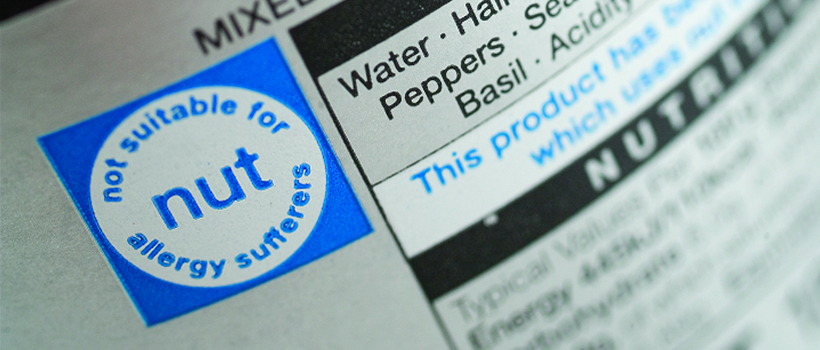
Asking our network about their food allergen cross-contact concerns
21 September 2023 | Helen Arrowsmith, Regulatory Affairs Manager and Allergen Specialist and Christopher James, Safety and Quality Specialist - Allergens
When asked in our recent poll, ‘What do you consider as the biggest challenge in ensuring the safety of food for those with food hypersensitivities?’, which was answered by over 100 food and drink industry professionals, almost half of respondents chose cross-contact from the list of options.
The results were:
What do you consider as the biggest challenge in ensuring the safety of food for those with food hypersensitivities?
- Cross-contact – 48%
- Labelling – 22%
- Supply chain information – 26%
- Testing – 4%
Taken overall, the results from all of the polls seem to suggest that it is the ‘unknown’ that is the main driver of concerns around food allergen cross-contact
We conducted some follow up polls that shed light on the issue of cross-contact in a little more detail. Taken overall, the results from all of the polls seem to suggest that it is the ‘unknown’ that is the main driver of concerns around food allergen cross-contact.
It seems that limitations in the provision of information about food allergen cross-contact risks throughout the food chain (i.e. supply chain information, voted at 26%) are a key driver of the concerns that end producers have (alongside managing cross-contact risks within their own facilities) about ensuring the safety of their food products for those with food hypersensitivities. Combined, concerns about allergen cross-contact and provision of supply chain information regarding food allergens make up 74% of the votes.
The subsequent poll questions and answers were:
What do you consider to be the biggest challenge in managing food allergens and preventing cross-contact?
- Supply chain information – 35%
- Segregation – 25%
- Cleaning – 23%
- Equipment design – 17%
As with the first poll, supply chain information scores highly here. Having said that, the results of around 20-30% for all answer options are fairly evenly split. Participants are likely concerned about the control of food allergen cross-contact within their own operations (through means such as segregation, cleaning and good hygienic design of equipment) as well as in the operations of their raw material producers and suppliers earlier in the food chain.
What do you consider to be the biggest food allergen cross-contact risk affecting your business’s products?
- Processing – 59%
- Agricultural cross-contact – 20%
- Food fraud – 18%
- Transport – 4%
The high result for processing further reinforces the message that may be gleaned from the previous poll – namely that processing (whosever operation it takes place within) presents the risk of food allergen cross-contact. It is likely that food and drink industry professionals feel much more able to manage this within their own operations than within those that are outside of their direct control.
The low result for transport here could be explained by participants in the food chain who are receiving well controlled and already packaged products. Food allergen cross-contact can, though, occur at many points throughout transportation, including dispatch, logistics and receipt of materials. Bulk materials in tankers or containers could, for example, be subject to food allergen cross-contact if robust controls are not effectively implemented in the supply chain.

In which of these areas of food allergen labelling would you most benefit from support?
- Quantitative risk assessment – 43%
- Precautionary information – 39%
- Global markets – 13%
- Free-from claims – 6%
The results of this final poll emphasise the importance of the provision of information throughout the food chain, since such information is needed in order to make an informed decision regarding precautionary allergen labelling (PAL) of finished end products.
A rapidly evolving way of deciding whether PAL is needed for final products is quantitative risk assessment (QRA), which uses clinically derived reference doses (an amount of total protein from an allergenic food in milligrams (mg)) to calculate action levels for reference amounts of the particular product (the units for action levels are mg total protein of the allergenic foodstuff/kg of the food product). If analytical results or calculations are above the action level this suggests that PAL is needed.
It is important to remember that the decision whether to apply PAL should not be based on analytical test results and/or QRA alone; rather testing should be used in combination with calculations and holistic information gathered to inform the decision-making process.
Currently, there is no steer from regulatory authorities at harmonised EU level or in the UK on the use of QRA to decide whether PAL is needed. It is therefore a business decision for each food business operator (FBO) in these jurisdictions to decide whether to use QRA.
For information on QRA please see our blog on developments in precautionary allergen labelling and information.
It is crucial that there is a transparent chain of communication throughout the food chain.
Where FBOs decide to use QRA, information on the concentration and protein content of cross-contact of food allergens within supplied ingredients would be needed to facilitate effective QRA. This, however, represents a step change in the provision of information throughout the food chain, which may take time to achieve. It is recommended that in the meantime a risk-based approach is taken, consisting initially of the collection of basic information (i.e. is there potential cross-contact?, what does the cross-contact consist of?, why and at what levels?).
It is clear that the provision of accurate information on food allergen cross-contact throughout the food chain is imperative to ensure that correct information is provided to consumers with food hypersensitivities about the safety of the food they consume.
We can help you to ensure food safety
Food allergen cross-contact can occur at every stage of the food chain, from ‘farm to fork’. Dealing with this can be challenging – but we are here to help.
If you need any information or support, get in touch. We provide a range of services to support your food allergen management needs, including; food allergen training courses, testing, and practical support with cleaning validation, hygienic design, food safety management systems, labelling and legislation.
If you would like a full label review from our global regulatory experts to check the compliance of your products across UK/EU and Global markets, get in touch with the Regulatory Affairs team (regulatoryadvice@campdenbri.co.uk).
Alternatively, for more information on the topic areas above, and the many other necessary considerations when producing legally compliant products, check out our training courses.
For more information, please contact:
Food allergen labelling and other legislation issues:
Preventing and monitoring allergen cross-contact:
Managing Food Allergens eBook
Download our FREE Managing Food Allergens eBook today! Secure food safety, control and confidence through effective allergen management.







